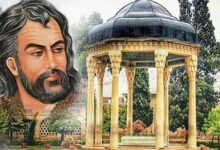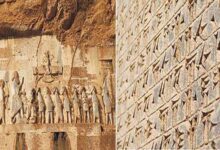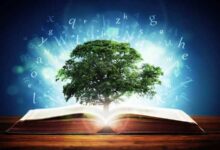Sohrab Sepehri

Where is the Friend’s House?
Sohrab Sepehri, at least, in these two decades, has not occupied the mind of anyone who is interested in books and is familiar with the developments of painting. A collection of poems and a selection of his paintings have been published many times and in large numbers, and the number of lovers of his poems and paintings has exceeded the norm.
His work has provoked different and varied comments and a lot of criticism and analysis has been written about it. Sepehri and his poems and even a number of his paintings have been interpreted from different perspectives and aspects, without realizing the volume of criticism and comments about Sepehri and his works more than the volume of the collection Poetry is his own comments. His critics have approached his poems from all angles: from the social, aesthetic, mysticism and philosophy of the Far East, the relation of his poems to surrealism, Kafka and the crisis of identities, as well as from the perspective of the poet who created clear concepts, images and moments for his audience. Is.
One called him a craftsman of language and the other, on the contrary, another gave an important role to the image in Sepehri’s poetry and the other, on the contrary, one considered his thoughts to be influenced by mysticism and philosophy of the Far East and witnessed Sepehri’s poems to prove this. He has given an example, and another has tried to evaluate his poems as a result of the unity of thought and experience. Whatever it is, at least in the last two decades, there have been fewer critics who have not stopped to comment on Sepehri and his works. Those who find Sepehri’s poems and paintings admirable. What those who, at least consider his works, have tried to give their opinion about Sepehri.
A summary of Sohrab Sepehri’s life
Born on October 7, 1928 in Kashan.
His father, Assadollah Sepehri, an employee of the Post and Telegraph Office, was interested in painting and music. His mother, Mah Jabin (Forough Iran), was Sepehri. She raised her children after the death of her husband. And in June 1994, fourteen years after the tragic death of Sohrab Sepehri, he passed away. Brothers and sisters, Manouchehr, Homayoun Dokht, Peri Dokht and Parvaneh.
1934 – Spending six years of primary education in “Khayyam Primary School” in Kashan, interest in painting and calligraphy and gradually poetry.
From his elementary school poems:
Friday to Tuesday Sleeping Complainant
I did not remember any elementary school
My heart ached day and night
I do not have a breath of pain, calm down.
1940- The end of primary school and the beginning of the first year of high school in Kashan
1943- The end of the cycle course in Kashan in June and the beginning of the introductory course in Tehran.
– Strengthening his interest in painting, poetry, poetry and publishing with members (Saba Kashan Literary Association)
1945 – The end of the two-year course of Tehran Preparatory University in June
1946 – Employed in “Kashan Culture Department” (Education Department) in December and participated in the sixth literary exams
1947 – Publication of his first poems with the name ((next to the grass or the tomb of love)) in Kashan with the introduction of his friend (Abbas Ki Manesh) in 26 pages
1948- Receiving a high school diploma and resigning from Kashan Culture Department in September and being employed in Tehran Oil Company in October of the same year
1328- Studied painting at the Faculty of Fine Arts, University of Tehran
1951 – Publication of the first book of poetry called “The Death of Color” (in October) with an introduction by Amir Shapour Zandnia, an influential relative and newspaper writer (in 71 pages with 22 poems)
1931 – Participated in the autumn exhibition of Mehregan Center
1943 – The end of the painting training course from the Faculty of Fine Arts, University of Tehran, for the first time and receiving the first degree scientific award. Participated in several painting exhibitions in Tehran (June) and published his second book of poems entitled (Life of Dreams). (In 63 pages). Employment in Tehran Health Cooperation Organization (June). Employment in (General Directorate of Fine Arts) in museums (December) and teaching in art schools
1954 – Translation of Japanese poems for the magazine (Sokhan) (October)
1967 – First trip to Europe (Paris and London) in August and enrollment in the Paris School of Fine Arts in lithography (lithography).
1958 – Travel to Italy (April) and participate in the first Tehran Biennale. Employment in the General Intelligence Office of the Ministry of Agriculture with the position of head of the Audio-Visual Organization (June)
Participate in the Venice Biennale – Preparing the Poetry Office (Debris of the Sun) for. print
1959 – Participates in the Second Biennial of Tehran and receives the Grand Prize of Fine Arts of the country (April). Travel to Japan (August) and training on wood engraving techniques.
1960 – Visiting India on his way back to Iran and watching (Agra) and (Taj Mahal) the publication of the third book of poetry with Nelm (Avar Aftab) (May) and holding a individual exhibition of paintings in Reza Abbasi Hall in Tehran. Publication of the fourth collection of poems entitled (East of Sorrow) (October)
1961 – Holding a individual exhibition in the Culture Hall
1962 – Participated in a group painting exhibition in the gallery (Gil Gomash) of Tehran and held a individual exhibition in (Golestan Film Workshop) during the years of acquaintance with Forough Farrokhzad (July)
Travel to Brazil and participate in the S سانo Paulo Biennale (July). Travel to France and participate in the group exhibition of contemporary Iranian art and the Port of Louvre Museum in France (July). Return to Iran and participate in the group exhibition (Niala) in Tehran and hold a individual exhibition at the Saba Gallery in Tehran (July).
1965 – Travel to India, Pakistan and Afghanistan. Return to India. It has a tremendous impact on the poet-painter.
1965 – Participated in a group exhibition at Borgner Gallery in Tehran and held a individual exhibition in the same gallery (July).
1966 – Travel to France, Spain, the Netherlands, Italy and Austria. Teaching at the Tehran Academy of Decorative Arts (October), publication of the long poem (Passenger) in Arash Quarterly (November)
1967 – Publication of Poetry Book (Green Volume) (February)
1968 – Travel to France
1969 – Return to France
1970 – Travel to the United States
1972 – Trip to Paris
1973 – Holding a individual exhibition at Seyhoun Gallery in Tehran.
1974 – Travel to Greece and Egypt and participate in the Iran booth at the first Tehran International Exhibition (January)
1975 – Holding a individual exhibition at Seyhoun Gallery in Tehran (January)
1976 – Travel to Switzerland and participate in the Iranian Contemporary Art Exhibition in (Art Market) Switzerland (June)
1977 – Publication of the complete collection of poems in (eight books) (June) Analysis of book poems in the program (books and occasional views) by Touraj Rahnama, Bijan Jalali and Manouchehr Atashi on the national television of Iran
1978 – Holding a individual exhibition at Seyhoun Gallery in Tehran
1979 – Travel to England
1980 – Death on May 1 due to leukemia in Pars Hospital in Tehran. Sepehri had bequeathed him to be buried in the village of Golestaneh. But his friends buried him in the courtyard of Imamzadeh Soltan Ali in the village of Mashhad Ardehal, fearing that the flood would flood his tomb.
Poet Painter and Painter Poet
Sohrab Sepehri (1928-1980) was both a poet and a painter, but before he wrote poetry he painted on white canvas, and before he became known as a poet, he was known as a painter in art circles and among the aristocracy. Nevertheless, he collected his poems and paintings at about the same time and with a short distance. He published his first collection of poems entitled Death in October 1951. From the fall of 1952, he presented his paintings by participating in several exhibitions in Tehran. Sepehri’s interest in painting in the series Death of Color is so obvious that the movement of the brush and paint in his first paintings has announced the poet’s painting.
Sepehri was as much a painter as he was a poet, and of course he was not a poet who painted from scratch, and at the same time he was not a painter who wrote poetry for fun and (leisure). Sepehri was not a brilliant human being, he was a poet-painter.
He was a professional poet who, if necessary, made a living from the income of his works.
He was so determined to find his way and goal that although he was employed by Kashan Education in December 1946. He resigned in September 1948. In October of the same year, he was hired by the Tehran Oil Company.
He resigned from the oil company a year later and was suspended until June 1953 at the Tehran Health Cooperation Organization, and then in December of the same year at the General Directorate of Fine Arts (Culture and Art) in the museums department and in teaching art. Work in the fields of fine arts.
Sepehri’s restless and restless spirit, which caused him to grow and develop, draws him here and there to calm him down for a moment. When Sepehri left the General Directorate of Fine Arts, he tried to alleviate his inner turmoil by traveling around the world.
He first went to Paris and London on a trip to Europe (1957), then to Italy (1958), and two years later to Japan (1960), on his way back to Iran he visited India (1960), and a short time later to Brazil and He went to France (1963), after which he was constantly traveling and exploring and experiencing – in Qadma’s words, traveling horizons and souls – traveling to India, Pakistan and Afghanistan (1964), traveling to Germany and England (1945), traveling to France and Spain and the Netherlands, Italy and Austria (1966), Travel to France (1969) and (1968), Travel to the United States (1970), Travel to Paris (1972), Travel to Greece and Egypt (1974), Travel to Switzerland (1976) Travel to England (1979).
But Sepehri did not find any big country in the capital until, according to Karim Emami. (He preferred the purity of the deserts around Kashan to the magnificent view of the 15th floor overlooking the Sen River and the silence of a villa branching off from fifty-three kilometers south of Otorot. Come after us and want to be curious about our situation…
People of Kashan
My days are not bad
I have a piece of bread, a little intelligence. Taste needle head
I have a mother, better than a tree leaf
Better friends than running water
And the god who is nearby
By this night the smells, the foot of that tall pine
On water awareness, on plant law
i am Muslim
My qibla is a rose
I pray the spring, the seal of light
Plain, my rug
* Sources and references are available in the editorial office of Artmag.











